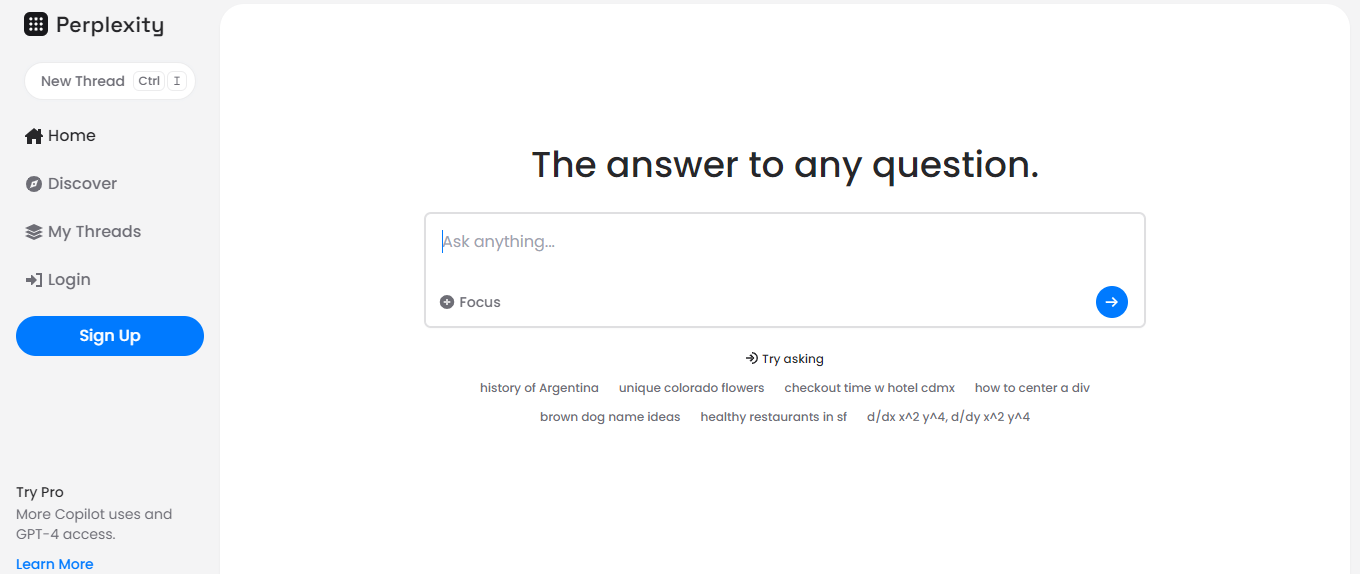Introduction
Artificial Intelligence (AI) has revolutionized the way we interact with technology. From virtual assistants to self-driving cars, AI has become an integral part of our daily lives. One fascinating aspect of AI is perplexity AI, which focuses on measuring the uncertainty and predictability of language models. In this article, we delve deep into the world of perplexity AI, exploring its definition, applications, and implications. Join us on this enlightening journey as we unravel the complexity of artificial intelligence.
Understanding Perplexity AI
Perplexity AI is a measure used to evaluate the performance of language models. It quantifies how well a language model predicts the next word in a sequence of words. The lower the perplexity score, the better the language model performs. It reflects the level of uncertainty or perplexity associated with predicting the next word in a given context. By analyzing perplexity scores, researchers can assess the effectiveness and robustness of different language models.
How Does Perplexity AI Work?
Perplexity AI calculates the likelihood of a sequence of words given a language model. It considers the probability distribution of words and assigns scores based on the model’s predictions. A lower perplexity score indicates that the language model is more confident in its predictions and has a better understanding of the given context. The formula for calculating perplexity is derived from information theory and statistical modeling techniques.
Applications of Perplexity AI
Perplexity AI finds applications in various domains, contributing to the improvement of language models and natural language processing systems. Let’s explore some of the key applications:
Evaluating Language Models
Perplexity AI provides a quantitative measure to compare and evaluate different language models. Researchers use perplexity scores to assess the quality of language models and make informed decisions about their suitability for specific tasks. By analyzing perplexity scores, they can identify areas of improvement and refine the models accordingly.
Perplexity AI in Natural Language Processing
Natural Language Processing (NLP) systems heavily rely on language models to process and understand human language. Perplexity AI plays a crucial role in evaluating and enhancing the performance of NLP models. It helps in tasks such as machine translation, sentiment analysis, speech recognition, and chatbot conversations.
Challenges and Limitations of Perplexity AI
While perplexity AI is a valuable tool for evaluating language models, it also comes with its challenges and limitations. One of the primary challenges is the lack of standardized evaluation metrics across different language models. Additionally, perplexity AI struggles to capture the nuances and context-specific aspects of language, leading to occasional inaccuracies in predictions.
Perplexity AI in Machine Translation
Machine translation involves automatically translating text from one language to another. Perplexity AI plays a crucial role in evaluating and improving the performance of machine translation models. By analyzing perplexity scores, researchers can identify areas where the translation model struggles and work towards enhancing the translation quality.
Perplexity AI in Speech Recognition Systems
Speech recognition systems convert spoken language into written text. Perplexity AI helps assess the accuracy and effectiveness of these systems. By measuring perplexity scores, researchers can identify areas of improvement and refine the speech recognition models to achieve higher accuracy and better understand spoken language.
Enhancing Chatbot Conversations with Perplexity AI
Chatbots are AI-powered virtual assistants that engage in conversations with users. Perplexity AI plays a vital role in enhancing chatbot conversations by improving the language understanding and response generation capabilities. By leveraging perplexity AI, chatbots can provide more accurate and contextually relevant responses, leading to a better user experience.
Perplexity AI in Sentiment Analysis
Sentiment analysis aims to determine the sentiment expressed in a piece of text, such as positive, negative, or neutral. Perplexity AI helps in assessing the sentiment accurately by analyzing the context and predicting the sentiment-bearing words. It enables sentiment analysis models to provide more accurate and nuanced results.
Exploring the Impact of Perplexity AI in Recommendation Systems
Recommendation systems rely on language models to suggest relevant content to users. Perplexity AI plays a significant role in evaluating and improving these recommendation systems. By measuring perplexity scores, researchers can refine the models and provide more accurate and personalized recommendations to users.
Ethical Considerations in Perplexity AI
As AI technologies advance, ethical considerations become crucial in the development and deployment of perplexity AI. Let’s explore some of the key ethical considerations:
Addressing Bias and Fairness in Language Models
Language models trained on biased datasets can perpetuate societal biases and inequalities. It is essential to address bias and fairness issues in perplexity AI models by ensuring diverse and representative training data and implementing bias mitigation techniques.
Privacy Concerns in Perplexity AI
Perplexity AI often involves analyzing large amounts of user-generated data. Privacy concerns arise regarding the collection, storage, and use of this data. To ensure user privacy, it is crucial to implement robust data anonymization techniques and comply with relevant data protection regulations.
Also read: Technology
Conclusion
Perplexity AI plays a crucial role in unraveling the complexity of artificial intelligence. By measuring the uncertainty and predictability of language models, perplexity AI enables researchers and developers to enhance the performance of AI systems across various domains. As we move forward, it is essential to address ethical considerations, embrace privacy safeguards, and continue advancing the field of perplexity AI to unlock its full potential.
FAQs:
What is perplexity AI?
Perplexity AI is a measure used to evaluate the performance of language models. It quantifies the uncertainty and predictability of these models.
How does perplexity AI work?
Perplexity AI calculates the likelihood of a sequence of words given a language model. It assigns scores based on the model's predictions, with lower scores indicating better performance.
What are the applications of perplexity AI?
Perplexity AI finds applications in evaluating language models, natural language processing, machine translation, speech recognition systems, sentiment analysis, and recommendation systems, among others.
What are the challenges of perplexity AI?
Challenges in perplexity AI include the lack of standardized evaluation metrics and difficulties in capturing context-specific aspects of language.
How does perplexity AI contribute to chatbot conversations?
Perplexity AI enhances chatbot conversations by improving language understanding and response generation capabilities, resulting in more accurate and contextually relevant responses.
What ethical considerations are associated with perplexity AI?
Ethical considerations include addressing bias and fairness in language models and ensuring user privacy by implementing robust data anonymization techniques.







This is really a great article.